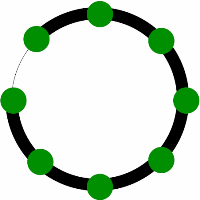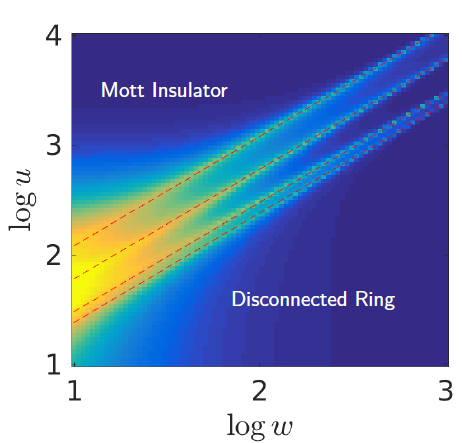The current issue of Physical Review A highlights a recent study by BGU Department of Physics doctoral student Geva Arwas and his adviser Prof. Doron Cohen, in collaboration with two researchers from Grenoble, proposing a theory of persistent currents in a ring-shaped circuit with condensed atoms. Such rings are the building blocks for atomtronics.
Atomtronics (as opposed to Electronics) is a new direction in quantum technology, where cold atoms are used instead of electrons. In such circuits the cold atoms can circulate or oscillate endlessly because of the absence of friction.
In a series of high profile papers, culminating in the current one, Arwas et al offer a theory based on "quantum chaos" for the operation of superfluid atomtronic circuits. The field of Quantum chaos provides a novel perspective to make sense of the random-like motion of particles in a quantum-mechanical context.

Above: Circuits with condensed atoms (that can hop between sites) are the building blocks for quantum Atomtronics. Such rings can support persistent currents that do not decay, aka superfluidity.
A potential application for such an atomtronic circuits is, for example, a SQUID (superfluid quantum interference device) for sensing of acceleration or gravitation. Looking deeper into the future of quantum technology, the theory will be useful for the design of QUBITs (quantum bits) for the purpose of quantum computation.
Arwas is an outstanding student – the current article is his sixth from his doctorate, exploring superfluidity and chaos in atomtronics. Some related works (on related themes) were in collaboration with Prof. Amichay Vardi from BGU's Department of Chemistry, and other students, notably Christine Khripkov.

Above: Persistent currents show a pronounced resonant behavior when the barrier strength (w) becomes of the order of the interparticle interaction energy (u). Click here for further details.